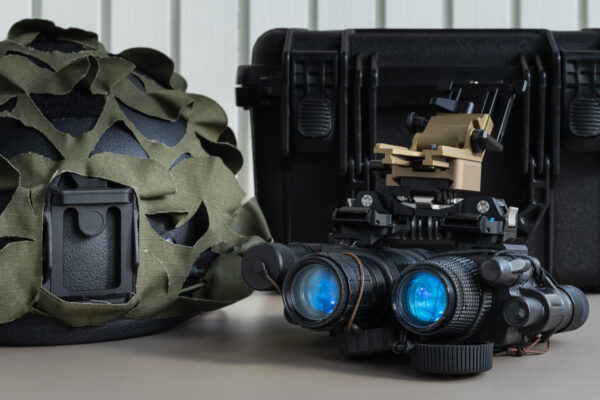Space satellite services proliferating
We recently reflected on the growing space market in our report Investing in space. As space-based data demand rises inexorably, an acceleration of constellation deployments of LEO small satellites is underway, with over 1,000 launches in each of the last two years compared to an average below 250 in the previous decade. As a result, there are now around 4,500 satellites in operation today and potentially another 100,000 could be launched over the next decade, dominated by the megaconstellations of SpaceX, OneWeb, Amazon (Kuiper Project) and others. In addition, a significant and growing number of smaller networks are also planned.
As functionality increases so will the number of applications and the data service revenues. As well as the fundamental requirement to improve connectivity for the globe, which should drive operational efficiency, increasingly advanced earth observation sensors are allowing data acquisition and analysis to identify and manage issues such as resource planning, energy management, agriculture, climate change, weather forecasting and disaster response. New technologies continue to be developed to increase the control and capabilities of payloads in order to improve the cost and timeliness of high-quality data supplied. An increasing number of launch options have reduced costs and increased the opportunity.
The global space industry has revenues approaching $400bn, of which almost three-quarters relates to the satellite industry, with the balance split between projects funded by government space budgets and commercial human spaceflight. Innovative new technologies and increases in demand for connectivity and the acquisition and transmission of space data are driving a surge in space activity. While the number of satellites to be launched increases substantially, the average value per satellite is likely to fall as the smallsat segment expands. The number of traditional high-value GEO satellites is not expected to change dramatically, meaning overall market growth is subdued.
It is useful to note the three main orbits involved in the provision of satellite services (all heights from the earth’s surface):
■
GEO (geosynchronous earth orbit) >35.780km where the large incumbent fixed-satellite service (FSS) space operators operate in a highly regulated and slot constrained environment.
■
MEO (medium earth orbit) 2,000–35,780km includes GPS satellites at 20,200km in a semi-synchronous orbit completing two orbits a day over the same locations.
■
LEO (low Earth orbit) 180km up to 2,000km is the main area for application of the new space companies’ satellites and technologies.
As opposed to the large GEO and MEO satellites weighing several tonnes deployed by the incumbent FSS and mobile-satellite service (MSS) operators, LEO deployments tend to be small satellites defined as weighing less than half a tonne. It is where AAC deploys its own microsatellite constellations and its satellites for customer missions, while supplying products to third parties for their own small satellite projects.
The small satellites category can be further segmented as follows:
■
minisatellites weighing between 100kg and 500kg,
■
microsatellites weighing between 10kg and 100kg,
■
nanosatellites weighing between 1kg and 10kg, and
■
picosatelites weighing less than 1 kilogramme.
The scale of the opportunity
As part of its National Space Strategy released in September 2021 the UK’s Department for Business, Energy & Industrial Strategy (BEIS) constructed a Space Sector Model developed by Bain & Company in April 2021. The model suggests that the global space economy could grow from £270bn ($346bn) in 2019 to £470bn ($603bn) by 2030. Other estimates suggest the space economy could more than treble to over $1bn by 2035. The opportunity is therefore substantial.
Exhibit 11 shows the segmental growth rates as the market grows, according to the BEIS Space Market Model used in developing the UK National Space Plan, released in September 2021.
Exhibit 11: Space market CAGR (2019 to 2030)
|

|
Source: BEIS Space Market Model
|
While the BEIS model could prove conservative, we feel it provides useful trend information. As can be seen broadband, global navigation satellite system (GNSS) and Earth observation (EO) segments are expected to show the strongest growth. While the number of satellites to be launched increases substantially, the average value per satellite is likely to fall as the smallsat segment expands. The number of traditional high-value GEO satellites is not expected to change dramatically, meaning overall market growth is subdued.
The space-based data services for EO and GNSS segments account for almost 40% ($133bn) of the current space economy, which BEIS is expected to increase to almost 50% ($305bn) by 2030. The segments cover a vast array of data-hungry domains including air, sea and land navigation, asset tracking, climate, meteorology, natural resource planning, agricultural optimisation and urban development, among others. Customers can be commercial, institutional or governmental.
Overall, the proportion of space-based data services versus infrastructure (spacecraft, launch, ground equipment and operations) revenues (69%:31%) in 2019 does not vary substantially in the BEIS model by 2030 (67%:33%), although we suspect the data demand will exceed expectations. For example, the European Union Agency for the Space Programme’s (EUSPA) GNSS and EO Market Report suggests that data services revenue for those segments could be around $100bn higher by 2030 than the UK model, which referenced earlier EUSPA GNSS reports. However, the same applies to the supporting ground-based connectivity infrastructure.
We expect the bulk of market growth to come from LEO operations, although technology and capacity upgrades in GEO should add to services revenues. Note that in absolute dollar terms, a low percentage growth rate in GEO revenues equates to substantial growth for new space sales.
Positioning AAC in the market
AAC is one of several small satellite companies building positions in the small satellite market, and potential new entrants continue to emerge. It is therefore clear that AAC’s SDaaS offering must be compelling in terms of data quality and cost compared to its competitors as well as the mega-constellations and the incumbent GEO and MEO operators. It appears that the company will continue to focus on niche opportunities rather than seek to provide connectivity bandwidth, where the mega-constellations appear likely to compete. The deployment of its own constellations over the next decade is likely to see it build and launch around 130 6U nanosatellites including a growing number of units to replenish its constellations.
In addition, we expect AAC to continue to supply platforms, subsystems and components to other operators for their networks and missions. Growth in the overall nanosats market is expected to continue, although progress has been disrupted during the last couple of years by the pandemic.
Exhibit 12: Number of nanosatellites launched, historical and forecast (2010 to 2025e)
|

|
Source: Erik Kulu, Nanosatellites & CubeSat Database, www.nanosats.eu
|
Erik Kulu’s Nanosatellites & CubeSat Database (www.nanosats.eu) identifies 2,037 nanosatellites launched through 1 June 2022 by 76 countries, of which 1,862 have been CubeSats, with 1,737 successfully deployed. These numbers have almost doubled since 2018. Of the total launched, 115 were lost to launch or deployment issues, which represent only a few mission failures given that the record for the largest single deployment was via a SpaceX launch with 143 nanosatellites onboard in 2021. However, only 1,296 are operational as around 20% have re-entered the atmosphere (387 nanosats) or returned to Earth (eight nanosats), with a further 12% (241) remaining in orbit but non-operational, around half of which have never been heard from since launch (127).
After only 80 launches between 1998 and 2009, the number of nanosatellites being deployed has increased dramatically and is expected to continue growing, as reflected in Exhibit 12.
Following the constraints across the industry caused by the pandemic, the forecasts indicate nanosatellite deployments are increasing once more. From 326 launched in 2021, the number is set to more than double to 690 by 2025, and we expected AAC to be deploying increasing numbers of its own and customer nanosatellites during this period.
Space debris a potentially compounding risk
A risk to LEO operations and missions is the proliferation of space debris. Debris is not just obsolete materials such as defunct satellites and spent rocket boosters, it is also the result of destructive impacts, be they accidental space object collisions or deliberate acts such as military anti-satellite (ASAT) missile testing. In LEO orbit the debris pieces can be travelling at up to 35,000km per hour and the debris field expands in three dimensions from the original collision orbit into both higher and lower orbits, which determines the natural decay time until earth re-entry. While plans are being evolved to remove some observable, well-defined debris such as old satellites, debris pieces down to a size of around 10cm are catalogued but there are probably millions of much smaller particles arising from destructive events. The problem is that because of these deliberate acts, more accidental collisions may take place, creating more debris and compounding the problem.
A global moratorium on ASAT tests could help. In April 2022 the US unilaterally committed to desist from further ASAT tests, which may translate into a global agreement. However, in the current geopolitical environment it is not clear whether the other active nations are going to follow suit.
In addition, mission operators appear to be taking more responsibility for mitigating the creation of further space debris during and after the operational life, including improving manoeuvrability by adding propulsion to more rapidly deorbit satellites, a feature that AAC is clearly addressing with Hyperion’s PM200 unit.



















